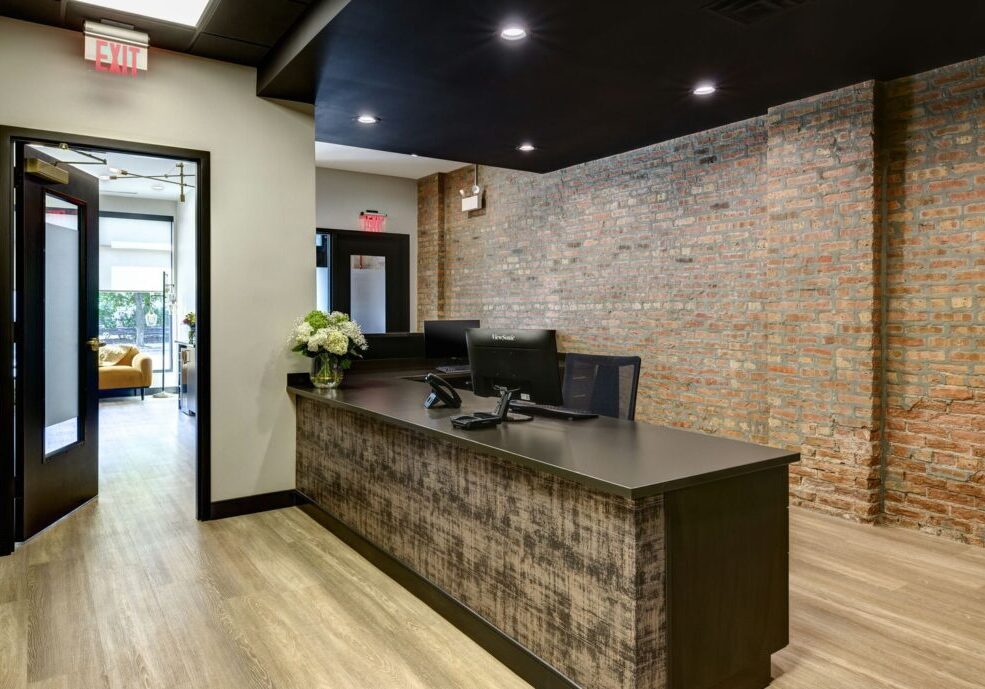
Outdated healthcare facilities can no longer remain competitive in an industry where patient-centric environments are the gold standard of exceptional patient care. Today, creating healthcare environments that contribute to patient experience and enhanced operational efficiency are critical to maximized return on investment (ROI). Here we explore ways to increase your medical construction ROI using a design-build approach focused on transformative, sustainable, forward-thinking designs.
Design-Build Approach
The right construction approach helps create efficient budgeting to prevent cost overruns while contributing to long-term cost reductions. A design-build approach saves time and money, working with a team that collaborates on the design and construction. A “one stop shop” takes the entire project through from sourcing a site to design and construction through to inspections and project completion.
Design-build provides all the expertise required to help avoid delays, improve communication, and avoid costly mistakes. You’ll have access to the professionals and experts who understand the process, including designers, architects, engineers and project managers. The building process is streamlined so the project is completed quickly, allowing you to start booking patients and generating revenue.
Prioritizing Medical Facility Improvements
Prioritizing capital improvements based on where you’ll see the most impact on patient experience is essential to improve ROI. Some considerations include:
- What areas have the most aesthetic impact on patients?
- What improvements are necessary to meet changing compliance standards?
- How can you improve patient experience through smarter space usage?
- How can you create a more sustainable space that easily adapts to changing patients’ needs?
- How can you improve air quality and natural light?
- What changes can facilitate easier patient intake processes?
Reducing Long-Term Operational Costs
Medical construction must go beyond aesthetic facelifts, focusing on the value of completely reimagining medical care spaces. Improved efficiencies in both energy management and patient care require a deeper look into changes that not only facilitate increased occupancy and patient satisfaction, but upgrades that reduce long-term operational costs.
Infrastructure upgrades that contribute to operational savings might include:
- HVAC systems that also help improve air quality
- Energy-efficient lighting and equipment
- Electrical systems that adapt to support changing medical equipment and technology
The beauty of this approach is that not only will the facility reduce long-term operating costs to improve ROI, but also create a safe, more comfortable environment that improves the facility’s reputation. As a result, you can drive professional referrals and patient bookings while attracting experienced medical and administrative staff to maintain a higher level of care.
Enhanced Patient Care Delivery
Patient comfort and convenience also contribute to increased ROI by helping improve patient satisfaction and outcomes. Rethinking space to enhance patient care delivery requires assessment of all patient touchpoints including:
- More welcoming waiting areas
- Easier wayfinding with reduced travel from Point A to Point B
- Optimized patient flow using self-serve apps and kiosks
- Layouts that improve communication with, and reduce isolation from medical staff
- Minimized travel distances within and between departments
When done right, enhanced patient care delivery also optimizes operational efficiency by streamlining workflows and improving space usage. In hand with an upgraded infrastructure and technology, you can further reduce operational costs to help maximize ROI.
Sustainability
Sustainable practices are not just about reducing your carbon footprint. It is an entire approach that considers all aspects of the healthcare facility such as:
- Energy consumption management
- Scalability to meet patient demand
- Pivoting to expand outpatient services
- Future proofing against regulatory and technology changes
- Flexibility in layout and design
- Improved indoor air quality with reduced VOCs
Sustainable designs also tap into a growing patient base who appreciate sustainable practices. This can change the perception of your business’s social responsibility and help attract this hard to please group of patients. As a result, you can improve patient occupancy as well as patient experience and satisfaction.
You might also find tax incentives related to sustainable, green initiatives such as energy efficient systems or green roofs.
Leverage Specialized Knowledge
Specialized knowledge regarding complex healthcare infrastructure and regulations, in hand with patient-centered design that improves operational efficiency is critical to ROI success. Healthcare sector specialization ensures you elevate patient experience and cater to unique operational needs.
Working with a company with a track record of successful healthcare sector designs ensures you overcome common industry-specific challenges at the design stage. You can reduce costs related to errors, noncompliance or change orders and keep up with the latest healthcare regulations and standards.
Maximizing ROI in medical construction requires industry knowledge and an understanding of how patient-centric care increases patient occupancy. Following these tips will help you create a patient-centric facility to maximize ROI.
Embrace innovative healthcare facility designs with Apex.
Your healthcare facility requires forward-thinking, patient-centric design and planning to improve ROI. Apex Design Build creates expandable, adaptable designs for longevity and ongoing cost-effectiveness. Reach out to Apex if you’re considering a medical facility design and build project.
